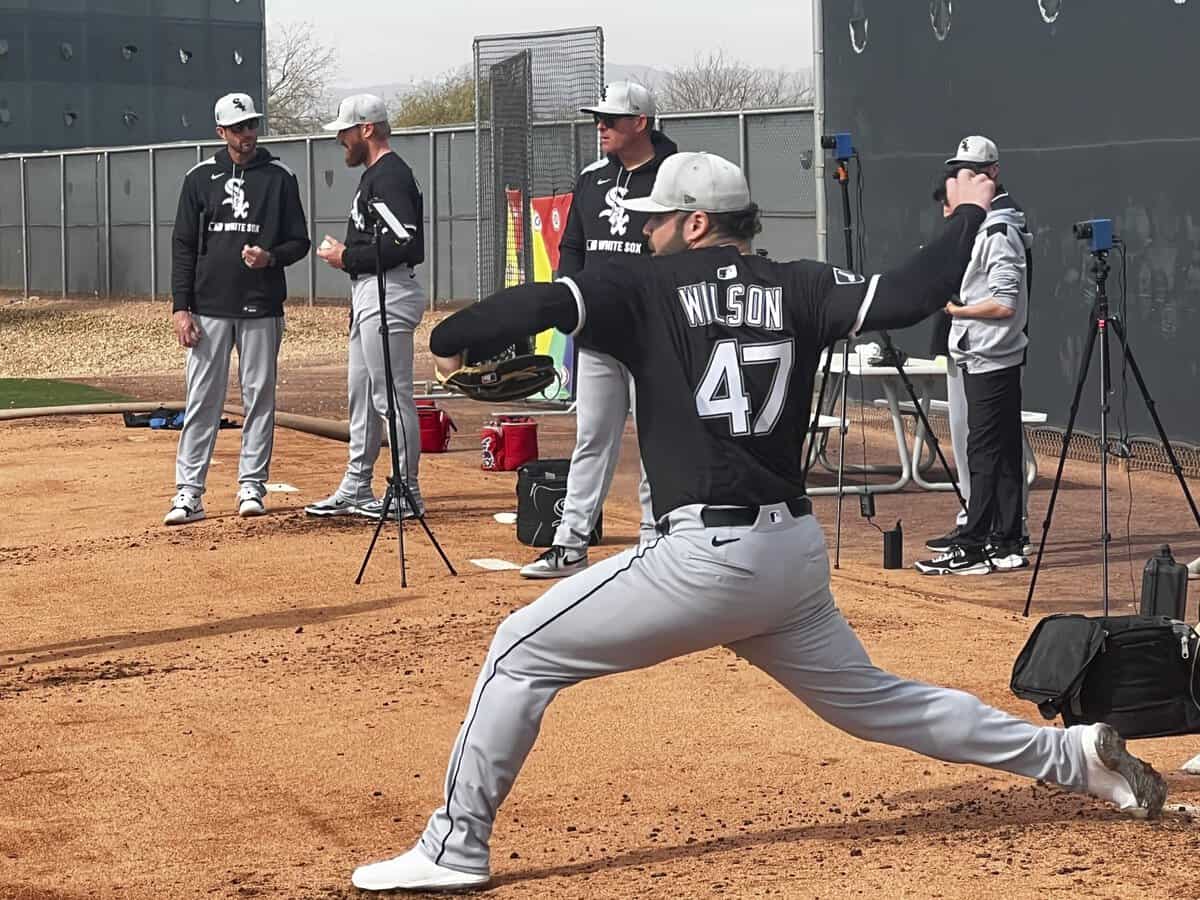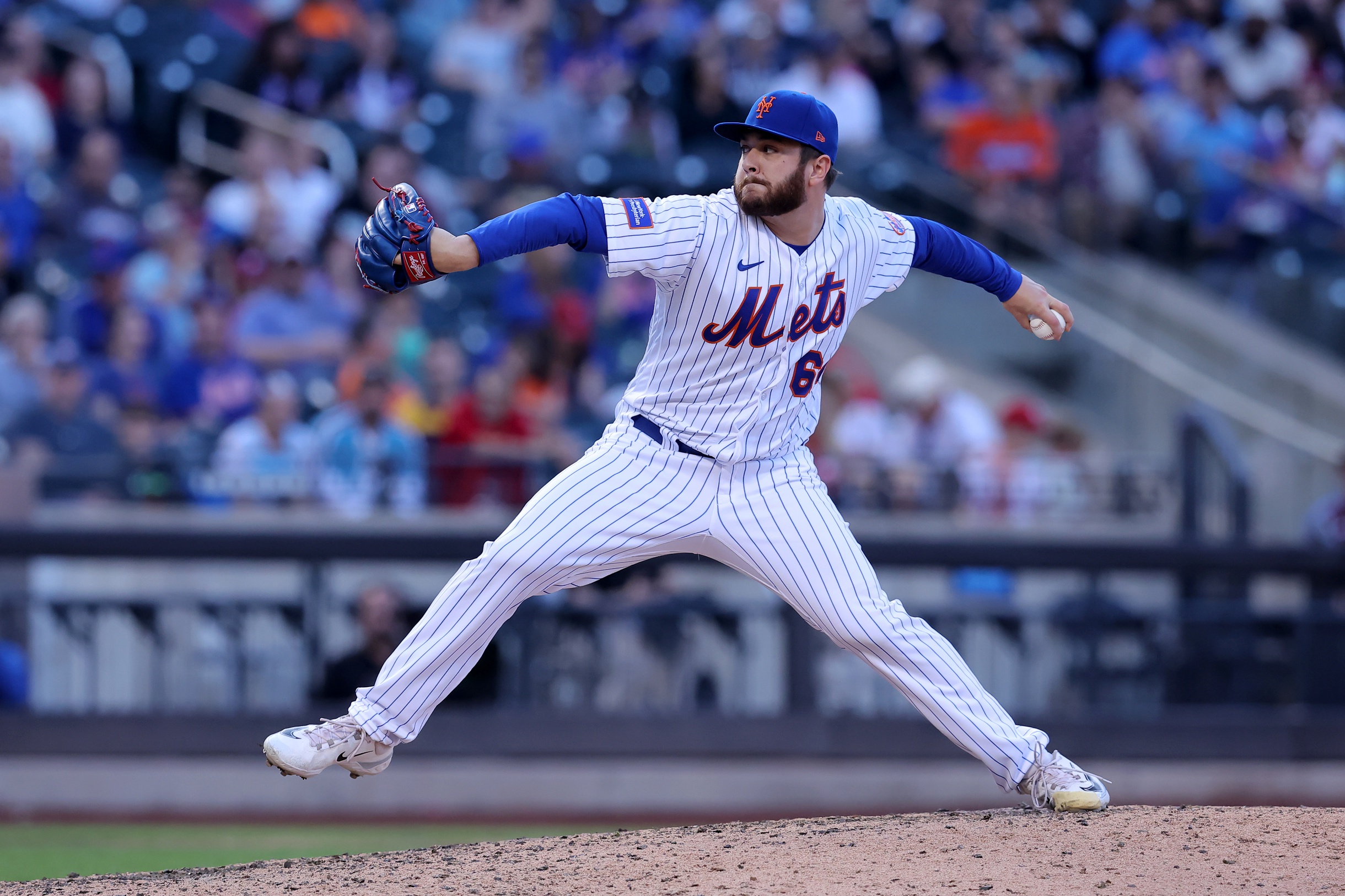PHOENIX -- When the White Sox missed out on Manny Machado, or even their less-involved pursuit of Bryce Harper, there was a fundamental misjudgment that the level they were willing to spend was suitable for landing the premier talent in the sport.
Now, that the White Sox know how badly they were out over their skis six years ago, or how far they have yet to go right now, is a strength of the current front office that's most easily perceived from the outside. It just doesn't produce an outlook that easily leads spring training headlines. Chris Getz and Will Venable are both distancing themselves from anything that would burden a young roster with expectations and focusing on a development-friendly environment. It certainly seems like the message was received across the league about what sort of shop they would be running.
An open competition for spots doesn't sound like the chummiest of workplaces, but it holds a certain type of appeal to a certain brand of former top-100 prospect.
"Opportunity," said non-roster invite Bobby Dalbec on what drew him to sign a minor league deal with the White Sox. "I wanted to be with a team that felt like -- not necessarily appreciate but know what I can do and believe I can contribute on a daily basis and that's what it felt like here."
"Just go out, put up good numbers, work hard and the game's going to reward you in whatever way it feels necessary," said Bryse Wilson, who signed a small guaranteed deal on the premise that he'll get to battle for a rotation spot. "It kind of reminds me a little bit of when I was coming up with Atlanta. We'll got into spring with 10-12 capable starters fighting for five spots. It's bringing back that healthy competition. It's not only going to make me better but it's going to make everybody better if you just embrace it."
In past seasons, the early days of covering spring training were filled with group scrums for players who commanded broad media attention for every update they had to offer. Luis Robert Jr. will surely draw such a crowd still when he arrives. Perhaps Andrew Vaughn and Andrew Benintendi will too, since Jonathan Cannon had a gathering around his locker on the first day due to the force of habit. But the 70 players in camp this year are largely wide-eyed prospects getting the lay of the land, and reclamation projects that the White Sox sagely realize they have no business passing up. Or in the case of Colson Montgomery trying to win the starting shortstop job after he ended a down 2024 on a strong note, some healthy blend of the two perspectives.
For past White Sox seasons that were tied to any notion of contending, a "best shape of his life" or "new fourth pitch" narrative always signaled a flimsy attempt to plug a critical roster spot with a player coming off a down year that cratered the acquisition price, and inspired malaise from the fan base. This year, the fan malaise comes pre-installed, and the reasons why a player accepted a low-level one-year contract or even a straight-up minor league deal is not only informative. It's imperative that the White Sox hit on a decent rate of them to demonstrate what this new leadership is good at identifying and fixing. Understanding how bad things are only goes so far.
"My mom helped me out with a lot of beans and rice," said Miguel Vargas, a former consensus top-40 prospect in the game two years ago, who was instructed to add weight and strength this offseason. "I gained 20 pounds, that was my goal for this year. I want to be around 218-220. I'm feeling great. From a hitting perspective it's been great so far."
The strike-zone judgment and dogged two-strike approach that once made Vargas highly rated were present after he came over at the deadline last year, but were buried under the surface-level issue that he lacked the strength to drive the ball with any authority. Now 25 and out of minor league options, the White Sox would like the centerpiece of the Erick Fedde trade to click, Vargas wants to avoid a transient existence of bouncing between organizations with disparate opportunity levels, and the Dodgers are paying Max Muncy $14.5 million this season to be far more of a sure thing at third base.
Wilson flew to the majors as a starter at the age of 20, and after his early failures there pushed him out of the Braves and Pirates rotations, the big right-hander wants to employ the self-knowledge gained after two successful years in other roles to this new opportunity. He's been playing around with a new arm slot, which is both lower than what he realized he crept up to with the Brewers, and not as extremely low as his early days with a more limited arsenal with the Braves.
"Trying to do something like this early in my career would have been super tough for me," Wilson said. "Now that I have these other pitches, we can create some better approach angles with the four-seam and that will open up the sinker and cutter playing east-west."
If it doesn't take, Wilson can slide back into his 2024 swingman role and the White Sox rotation will enter an already anticipated scramble mode. If it does, he's a veteran on a one-year deal who likely becomes trade bait. That's how things will go this year for a club that is still converting most found major league value into their larger priority of prospect depth. The lows aren't unexpected enough to inspire a true crisis, and the highs come with sad reminders of the state of things.
At 29, Dalbec is two years older and probably in a similar boat as Wilson, only more eager to simply make the team. Despite being used as a first baseman primarily by the Red Sox, the former college two-way player regards third base at home, and doesn't blink at the idea of covering shortstop or the outfield, which he's done at Triple-A in the past. In fact, Dalbec has done a lot at Triple-A in the past, hitting .261/.360/.512 with 65 home runs in 254 games at that level, but has long since reached the point where success in Worcester earned him no more than a cup of coffee in Boston.
Dalbec's current optimism is buoyed by efforts to address issues with his vision. He became aware of the problem last season, but figuring out how or if he'd hit with glasses (he's since switched to contacts) and calibrating his swing timing in response was always destined to be an offseason project.
"It feels like less things have to go right each swing, or each pitch," Dalbec said of his improved vision. "My eyes felt better as soon as I put the contacts on, but my mechanical habits I created were fairly cemented in there. So it wasn't really feasible to fix stuff [in-season] necessarily. Now I just feel more natural. I hadn't really felt natural the last 2½ years."
For a team conducting itself like the Red Sox, Alex Bregman seemed like a more serious way to round out their infield than selling the fanbase on Dalbec's new contact lenses. For the White Sox, and especially with the commitment level he required, it's something concrete to build off, rather than just recycling Tobias Funke logic, since even production in line with Dalbec's 2021 would vault him to the middle of their lineup. The same could be said for NRI Brandon Drury. He was so awful for the Angels last year that bringing him back after 97 games of a .469 OPS would be unjustifiable, but his three-year run of above-average major league offense from 2021-23 is so lacking in peers in the White Sox clubhouse that anything resembling the 32-year-old's former self feels like a lock for the roster.
"Defensive versatility on the infield, we’ll see where he fits in there," Venable said. "Really just want to give this guy an opportunity. He’s hungry to get back to the kind of player he knows he can be. We want to provide the opportunity and support for him to do that."
The good news for the White Sox is that there's no better use of their time this spring and throughout this season until/unless a prospect wave takes hold. The bad news for the White Sox is, well, that's actually also the bad news.





